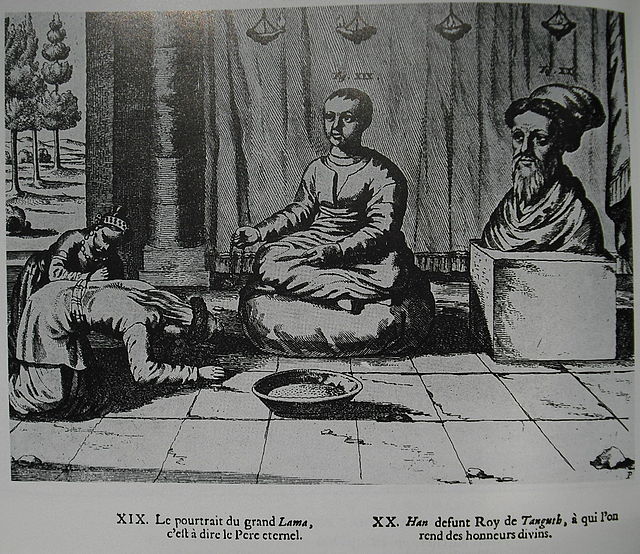Loading AI tools
From Wikipedia, the free encyclopedia
The priest and patron relationship, also written as priest-patron or cho-yon (Tibetan: མཆོད་ཡོན་, Wylie: mchod yon; Chinese: 檀越關係; pinyin: Tányuè Guānxì), is the Tibetan political theory that the relationship between Tibet and China referred to a symbiotic link between a spiritual leader and a lay patron, such as the historic relationship between the Dalai Lama and the Qing emperor. They were respectively spiritual teacher and lay patron rather than subject and lord. Chöyön is an abbreviation of two Tibetan words: chöney, "that which is worthy of being given gifts and alms" (for example, a lama or a deity), and yöndag, "he who gives gifts to that which is worthy" (a patron).[1]

During the 1913 Simla Conference, the 13th Dalai Lama's negotiators cited the priest and patron relationship to explain the lack of any clearly demarcated boundary between Tibet and the rest of China (ie. as a religious benefactor, the Qing did not need to be hedged against).[2] According to this concept, in the case of Yuan rule of Tibet in the 13th and 14th centuries, Tibetan Lamas provided religious instruction; performed rites, divination and astrology, and offered the khan flattering religious titles like "protector of religion" or "religious king"; the khan (Kublai and his successors), in turn, protected and advanced the interests of the "priest" ("lama"). The lamas also made effective regents through whom the Mongols ruled Tibet.[3] However according to Sam van Schaik, this is an oversimplification, and the Mongols ruled Tibet as a colony. The Bureau of Buddhist and Tibetan Affairs and Imperial Preceptor in Khanbaliq were at the top of the Tibetan administration, but due to the great distance from Tibet, they had little direct influence on daily governance. Hence, the highest authority in Tibet was the administrator of the Sakya who deferred to the abbot in religious matters.[4]
Western historians such as Melvyn Goldstein, Elliot Sperling, and Jaques Gernet have described Tibet during the Yuan and Qing dynasties as a protectorate, vassal state, tributary, or something similar,[5] and made clear about the subordination of Tibet to the Yuan and Qing emperors,[6][7] although the de facto independent Tibetan government (1912–1951) and Tibetan exiles promote the status of independent nation with only a patron and priest relationship and the idea that the political subordination to the Yuan and Qing emperors was a misunderstanding.[8][6] According to Elliot Sperling, an expert on the history of Tibet and Tibetan-Chinese relations at Indiana University, the Tibetan concept of a "priest-patron" religious relationship governing Sino-Tibetan relations to the exclusion of concrete political subordination is itself a "rather recent construction" and unsubstantiated. Instead, the patron and priest relationship coexisted with Tibet's political subordination to the Yuan and Qing dynasties.[9][10] He writes that the priest and patron relationship has been present in times of political subordination, such as during the Yuan and Qing dynasties, as well as in times which the patrons did not possess political authority in Tibet, such as during periods of the Ming and Qing.[11]
Seamless Wikipedia browsing. On steroids.
Every time you click a link to Wikipedia, Wiktionary or Wikiquote in your browser's search results, it will show the modern Wikiwand interface.
Wikiwand extension is a five stars, simple, with minimum permission required to keep your browsing private, safe and transparent.